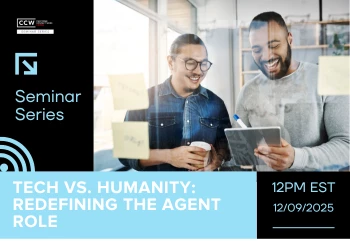Customer Experience and the Human Touch
Add bookmark
For many years, organizations have focused on customer satisfaction but only the tangible, rational needs of the customer through an emphasis on products, pricing, processes and so on. A customer who is "just" satisfied, however, is unlikely to be a passionate supporter. Passion, loyalty and advocacy are driven by emotions rather than reason; and emotions are a purely human phenomenon. In this article we address the role of emotions in the customer experience and in customer satisfaction. In particular, we explore the drivers of the emotional side of the customer experience. Finally, we consider the managerial implications, particularly the application of these themes in an economic crisis.
Customer Satisfaction: A Blend of the Emotional and Rational
Think about the last time you had a great experience with an organization.
Would you describe it as a superior product, a good price or a satisfactory transaction? Maybe—but is that all? Chances are you would also describe the experience as enjoyable, exciting or fantastic. Similarly, bad experiences tend to evoke responses such as anger, disappointment or offense, rather than just "it was unsatisfactory."
People perceive experiences as a blend of emotional and rational factors, but it is the emotional memories that stick with us. People remember bad experiences—and tell others about them—for a very long time. Emotional content can determine the strength of the ongoing relationship with the customer, and is often used by the customer to assess and categorize service providers.
In the context of a given customer experience, pleasure is a powerful determinant of spending intentions, and excitement has a powerful impact on willingness to stay and interact with service employees during the episode.
Go Beyond the Call of Duty In Pursuit of Customer Satisfaction
Customer emotions are driven more by how service employees treat customers than by the technical or functional quality of the product or service. A great product can be destroyed by a rude customer service employee and a commoditized product can be made great by an employee going beyond the call of duty in pursuit of delivering customer satisfaction. The customers takes their emotional cues from the attitudes and behavior displayed by customer service employees, from a perception of being treated well, fairly and with respect. Applying Frederick Herzberg’s two factor theory, functional quality may be categorized as a hygiene factor whereas employee attitudes and behaviors may be seen as motivators.
Hygiene factors are the tickets to the game; motivators win the game. Despite the importance of the emotional side, many organizations today persist with only functional, rationally-based measures such as customer satisfaction. Yet customer satisfaction is not necessarily always a trigger of customer loyalty—after all, the customer expects to be satisfied when they pay good money for a product—and up to 85 percent of satisfied customers may defect to the competition. In an economic crisis, it is even more important to focus scarce resources on the things that will make the most difference to the customer and their willingness to stay, buy more and recommend your organization to others.
Examples of Hygiene Factors/Satisfiers
- Access and availability
- Doing the basics (what is expected) well
- Product performance
- Service performance
- Price and promotion
- Speed and effectiveness of response
- Quality; fitness for purpose
- Reliability
- Processes
- Physical environment
Motivators/Emotional Drivers
- Engagement and listening
- Understanding and empathy
- Human responsiveness and rapport
- Confidence and empowerment
- Competence to serve
- Personalization; doing it the customer’s way
- Trust
- Honesty
- Making and keeping commitments
- Friendliness
- Issue handling and justice
Each of the motivators/emotional drivers in the above list warrants further discussion and analysis; a task that is beyond the scope of this paper.
For example, trust can take the form of credibility (doing what you say you will do) and benevolence (acting in the best interests of the customer). Organizations today have the opportunity to understand customer emotions and deliver a superior emotional experience by investing in analyzing customer emotions, developing front-line capabilities and measuring emotional drivers such as these.
Customer Satisfaction is Driven by Customer Service Delivery
It makes sense to develop such customer management systems at any time in the business cycle, but particularly so in an economic crisis. Working on employee attitudes and behaviors does not necessarily require the large outlays that are required for major capital projects such as new customer relationship management systems, production facilities or retail outlets. Furthermore, a successful organization should already have adequate products, tools and systems for customer satisfaction; in an economic crisis these can be maintained whilst the focus turns from what we do to how we do it. Interestingly, organizations often turn to cutting back employee investment when times are tight—a reaction that is likely to damage rather than enhance the customer emotional experience.
In conclusion, organizations are best served by an understanding of both the rational and the emotional factors that drive the customer experience.
These factors, when combined, serve to provide a comprehensive view of the experience from the perspective of the customer. Rational factors are necessary to deliver the basics and satisfy the customer but are not sufficient to drive retention, loyalty and word of mouth recommendation. The latter are driven strongly by customer emotions based on factors such as trust, empathy, personalization and friendliness. In an economic crisis, organizations can develop understanding and competence in these factors with relatively low investment, delivering high returns to the organization and customer alike.
First published in the Customer Futures series.






















